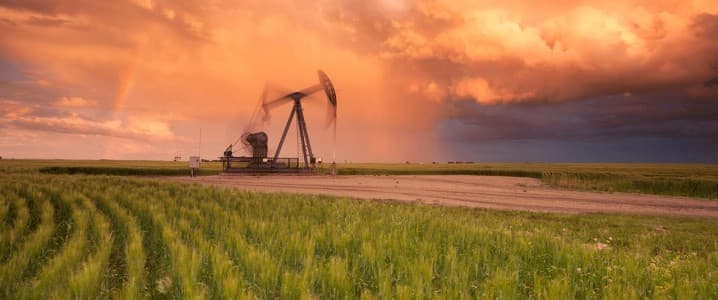
Small U.S. oil and gas producers from Texas to Wyoming are concerned that the new federal rule designed to slash methane emissions in the industry could force them to shut down wells and put them out of business.Early this month, the U.S. Environmental Protection Agency (EPA) announced a final rule that will sharply reduce methane and other harmful air pollutants from the oil and natural gas industry, including from hundreds of thousands of existing sources nationwide, and promote the use of methane detection technologies.
Oil and natural gas operations are the nation’s largest industrial source of the “super pollutant” methane, EPA says, noting that the rule would slash methane emissions by nearly 80% compared to future operations without the rule.Environmental organizations and supermajors such as BP welcomed the finalization of the rule.“bp welcomes the finalization of a strong federal methane rule for new, modified and – for the first time – existing sources and congratulates the Administration on this important milestone,” the UK-based supermajor said.
But many associations of petroleum producers across America – while recognizing the need and goals of lowering emissions – are wary of the costs the new rule would incur to the business. Some view the federal methane rule as another “tax” on the oil and gas industry at a time when homegrown oil and gas production is more important than ever to reduce U.S. dependence on oil imports from more polluting and less democratic – to put it mildly – countries.
The new regulation, expected to take effect in five years, will require comprehensive monitoring for methane leaks from well sites and compressor stations, among other things.For small producers of the so-called marginal wells, the cost of compliance and installing monitoring technologies would be too much to bear, industry operators and associations say.For example, Texas-based Chisholm Petroleum could fold when the regulation takes effect.
“It’ll be death knell for people in the business that are my size,” Chisholm Petroleum owner Cactus Schroeder told Houston Chronicle’s James Osborne.“The reality is I’m at the end of my career, and if this happens a lot of my properties that are smaller scale can’t handle the cost of getting up to speed on those rules,” Schroeder said.
While the large-scale companies won’t have difficulties complying, and while they have collaborated with EPA on the rule, the small guys operating small old wells would suffer the most, according to Ramanan Krishnamoorti, a petroleum engineering professor at the University of Houston.“The challenge is going to be for the old legacy wells, the small- and mid-size wells. For those companies, it’s going to hurt,” Krishnamoorti told Houston Chronicle.
Industry and State Opposition
Some industry associations and oil-producing states criticized the new federal methane rule, saying it would burden producers and lead to job losses.The Independent Petroleum Association of America (IPAA) said, “The new source requirements will impose complicated new requirements, and the 2022 proposed existing source requirements have been estimated to lead to the shut down of 300,000 of the nation’s 750,000 low production wells, wells that are essential to our country’s energy production.”
The Energy Workforce and Technology Council believes that the “final rule will serve as a new tax on American energy production at a time when this industry could not be more vital,” President Tim Tarpley said.“The implementation of a new tax on the oil and gas industry will directly impact the ability of Americans to obtain energy to fulfill daily needs, increasing the cost of oil and natural gas prices and decreasing domestic energy security.”
Kathleen Sgamma, president of Colorado-based Western Energy Alliance, said that the rule targets “small businesses that cannot absorb the relatively huge regulatory costs of this rule and will be put out of business.”The so-called Super-Emitter program in the rule undermines the lawful role of states, deputizes unaccountable activists, and “is ripe for challenge in court,” Sgamma said.
“EPA is willing to put at risk 10 percent of U.S. oil production at a time of high energy prices and constrained supply from OPEC, thereby ensuring that the United States will send billions of dollars overseas to make up for the energy loss,” Sgamma added. Wyoming Governor Mark Gordon said that with the rule, “EPA adds a heavy-handed federal layer with marginal environmental benefits compared to the increased costs.”“The additional costs of implementation will be passed on to consumers, both inside and outside of Wyoming. DC is attempting to fix a problem that is already being addressed.”
The industry in Wyoming fears that its 300 smaller oil and gas firms will be put out of business. “Just the technical and complicated nature of this and trying to retrofit some of these wells that may have to be shut down as the only option,” Ryan McConnaughey, Vice President of the Petroleum Association of Wyoming, said, as quoted by Wyoming Public Radio.“Their goal is to shut down oil and gas operations on federal lands,” McConnaughey added.
In North Dakota, home to the Bakken and part of the Williston basin, the North Dakota Petroleum Council “has significant concerns about the new methane emission rules,” especially the introduction of ‘third-party’ monitoring, it said in response to the rule. “Small to mid-size companies will likely face significant financial and operational challenges under the new regulations,” NDPC said, and voiced concerns that small operators could end up being consolidated into larger firms due to regulatory and economic pressures.
A consolidation wave in the oil and gas industry could lead to reduced competition and a shift in the industry’s landscape, NDPC said.“These rules not only affect the operators but could also have broader long-term economic implications, including impacts on local economies and job markets in the region.”
Source:https://oilprice.com
